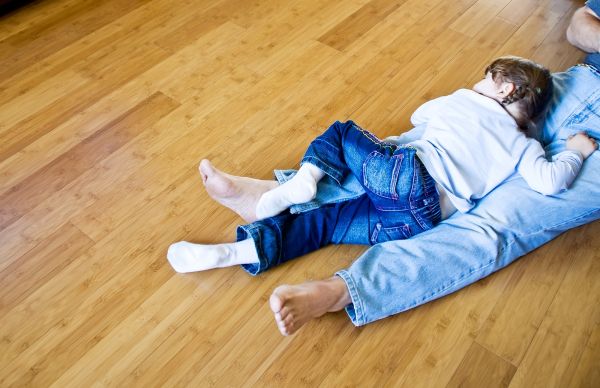When you plan to go green for your home, don’t ignore the environmental effects of the materials beneath your finished floor. What’s underneath your floor can also make a substantial difference in helping you contribute your way to save the planet. With the world focusing on nature friendly ways to save our mother earth, companies are exploring opportunities to design the floors and subfloors in an eco friendly way. From the type of flooring material to flooring installation, all can make an impact on the environment – whether positive or negative depends on your style of living. Here are some environment friendly subflooring ideas for your home:
1. Bamboo subflooring
Bamboo flooring is a durable and a long lasting option used by eco lovers for subflooring their homes. It is an attractive alternative to wooden floors. Rapidly renewable, it is sturdy and readily available in solid, woven and engineered versions. This form of eco subflooring is very cost effective and easy to install. Bamboo flooring is mold and mildew resistant along with an elasticity property that resists cracking.
2. Concrete subflooring
Concrete subflooring can be a viable option for the eco friendly folks as it is less likely to trap allergens the way carpet can and helps to warm the surface if you use a radiant heating system. It is a cost effective mechanism for subflooring as it does not require maintenance and is long lasting. Opting for a concrete subflooring can help you reduce the additional cost of carpet flooring. Use a non-toxic concrete sealer which is approved by the manufacturer of the adhesive that you have chosen to maintain your idea of going green. A concrete floor is durable.
3. Recycled wooden subflooring
If you are a hardwood lover and cognizant of the environment hazards, recycled wood subflooring should be your pick. This form of subflooring is long-lasting, durable, and versatile. Recycled form of wood is processed from wood that has been lying as a waste, also referred as discarded wood. You should opt for reclaimed wood subflooring that has been treated with formaldehyde or other substances which are high in volatile organic compounds (VOCs) and does not contain toxic substances. Such environmentally hazardous substances increase your carbon footprint and defeat the purpose of using eco friendly subflooring options.
4. Natural Membranes
A non conventional technique using Sodium bentonite, a clay material, is an eco friendly way for your house subflooring. This helps in creation of a waterproof system and is usually installed in form of panels. They are easy to install and maintain. This type of subflooring is environmentally safe. The panels of this subflooring option marinade the water completely. This helps in expanding the subflooring up to fifteen times its original volume. This establishes an effectively sealed subfloor. This is a cost effective option to make your home green.
5. Cork subflooring
Cork subflooring is one of the most natural forms of subflooring. For the environmentally conscious people, this is right choice as it is completely renewable and is mold, insect and germ resistant. Cork subflooring is comfortable and is made from a sustainable resource. Cork is cork oak bark and not wood. The tree bark can be harvested up to twenty times over its lifetime.
6. Linoleum subflooring
Linoleum subflooring is considered green, economical and resilient for all the eco conscious folks. It is processed from natural products like linseed oil, wood, pine rosin or cork powder and limestone. This type of eco subflooring has been in existence for ages. Installing linoleum subflooring is a good option if you are looking for a durable, long lasting, low maintenance and all natural form of subflooring. Its natural composition makes it a great choice for the nature friendly buyers. Natural constituents of linoleum flooring brand it for a biodegradable and a recyclable flooring option at the end its life cycle. With little care, this green subflooring can last for decades. This resilient flooring material, also has anti-bacterial properties as the continuous oxidation of linseed oil makes it tough for the bacteria to grow and reproduce. Linoleum flooring doesn’t burn and also doesn’t melt easily, making it a great choice for a subflooring option.
When opting for an eco friendly subflooring, remember to focus on leveling. Going green can’t get easier than looking for eco friendly subflooring options. Subflooring is a great start to save the environment by using materials made from natural resources like bamboo, cork, linoleum and more as listed above. Go green, save the environment and live healthy.



